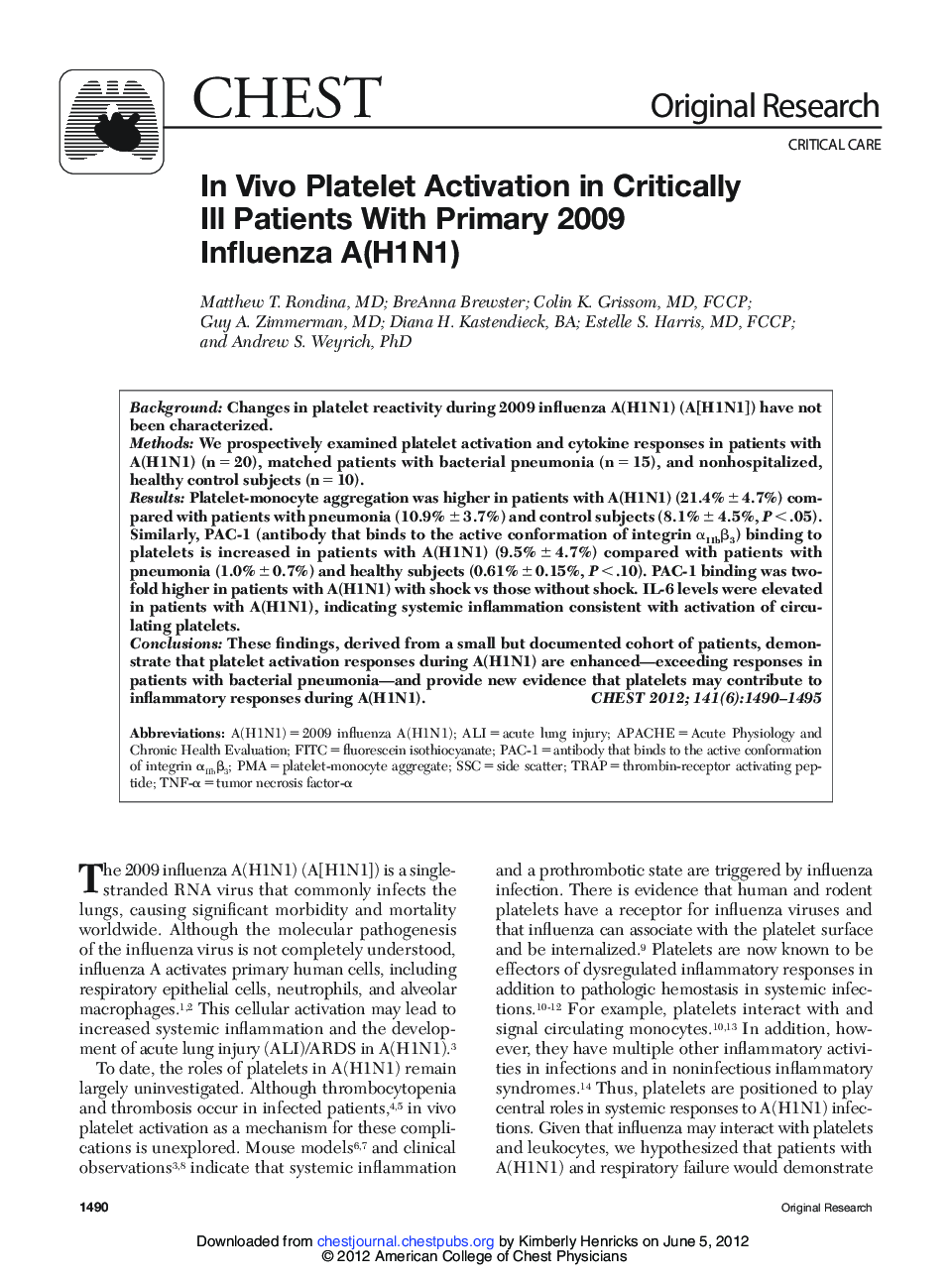| کد مقاله | کد نشریه | سال انتشار | مقاله انگلیسی | نسخه تمام متن |
|---|---|---|---|---|
| 2900512 | 1173332 | 2012 | 6 صفحه PDF | دانلود رایگان |

BackgroundChanges in platelet reactivity during 2009 influenza A(H1N1) (A[H1N1]) have not been characterized.MethodsWe prospectively examined platelet activation and cytokine responses in patients with A(H1N1) (n = 20), matched patients with bacterial pneumonia (n = 15), and nonhospitalized, healthy control subjects (n = 10).ResultsPlatelet-monocyte aggregation was higher in patients with A(H1N1) (21.4% ± 4.7%) compared with patients with pneumonia (10.9% ± 3.7%) and control subjects (8.1% ± 4.5%, P < .05). Similarly, PAC-1 (antibody that binds to the active conformation of integrin αIIbβ3) binding to platelets is increased in patients with A(H1N1) (9.5% ± 4.7%) compared with patients with pneumonia (1.0% ± 0.7%) and healthy subjects (0.61% ± 0.15%, P < .10). PAC-1 binding was twofold higher in patients with A(H1N1) with shock vs those without shock. IL-6 levels were elevated in patients with A(H1N1), indicating systemic inflammation consistent with activation of circulating platelets.ConclusionsThese findings, derived from a small but documented cohort of patients, demonstrate that platelet activation responses during A(H1N1) are enhanced—exceeding responses in patients with bacterial pneumonia—and provide new evidence that platelets may contribute to inflammatory responses during A(H1N1).
Journal: Chest - Volume 141, Issue 6, June 2012, Pages 1490–1495